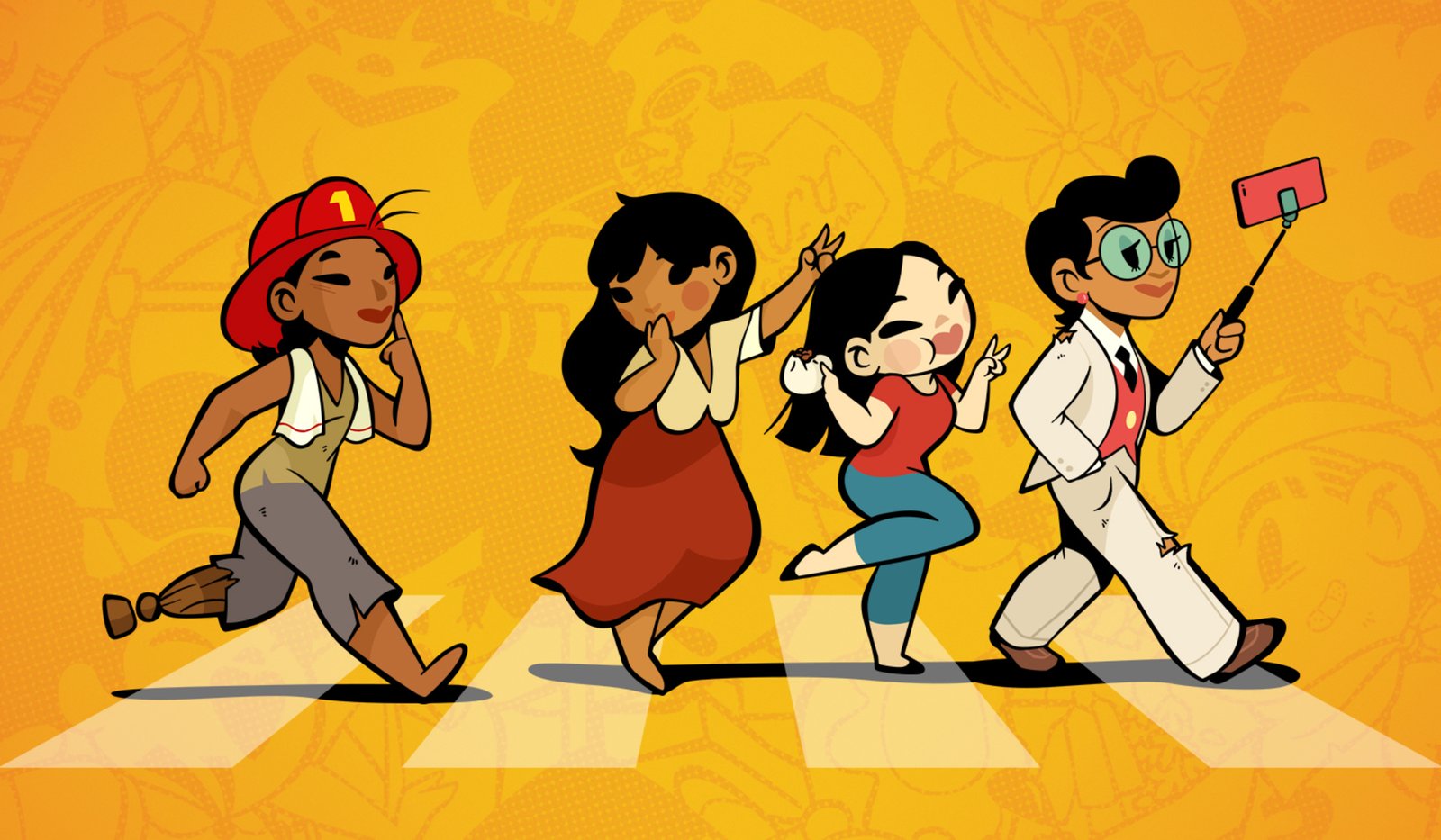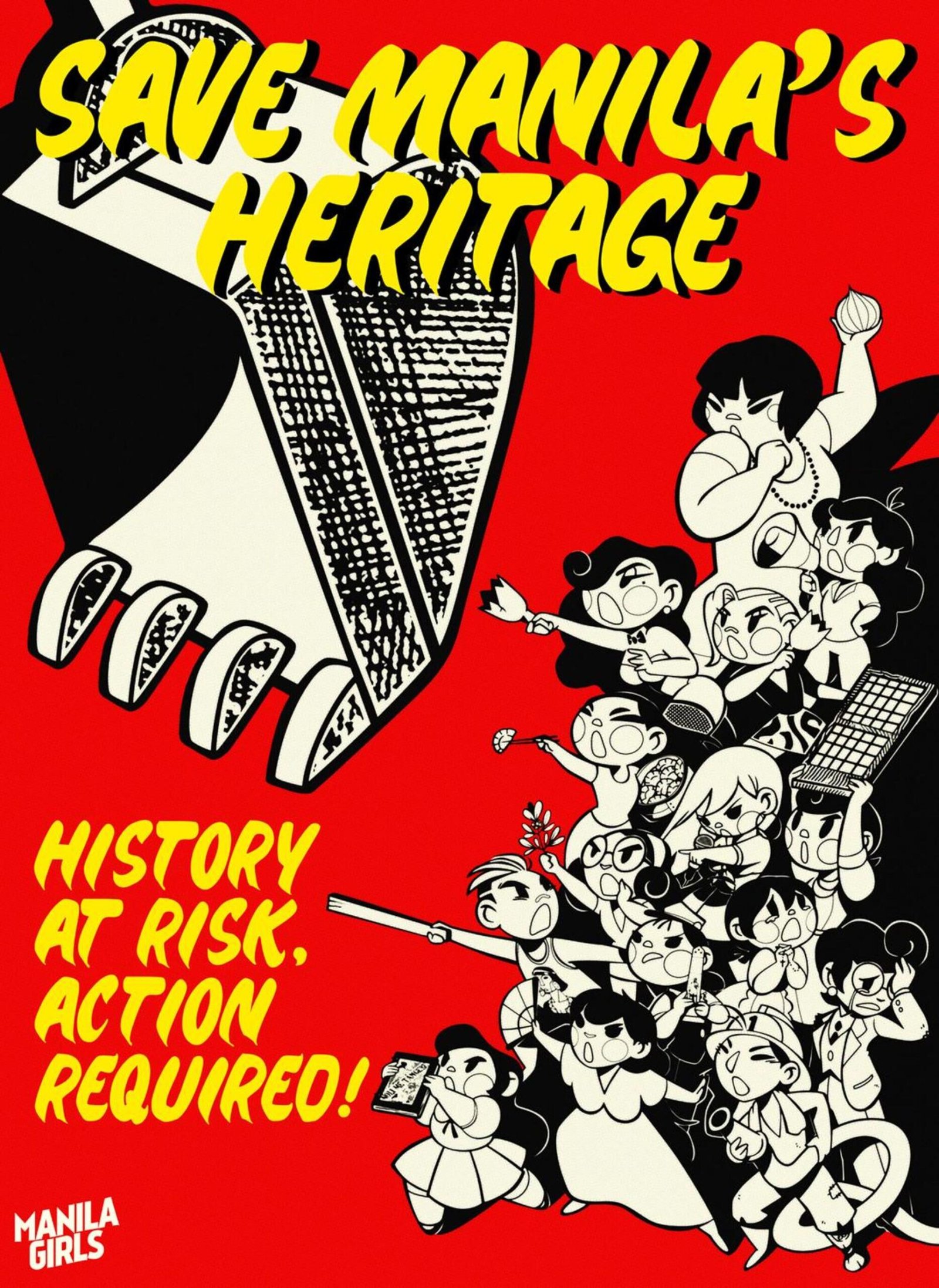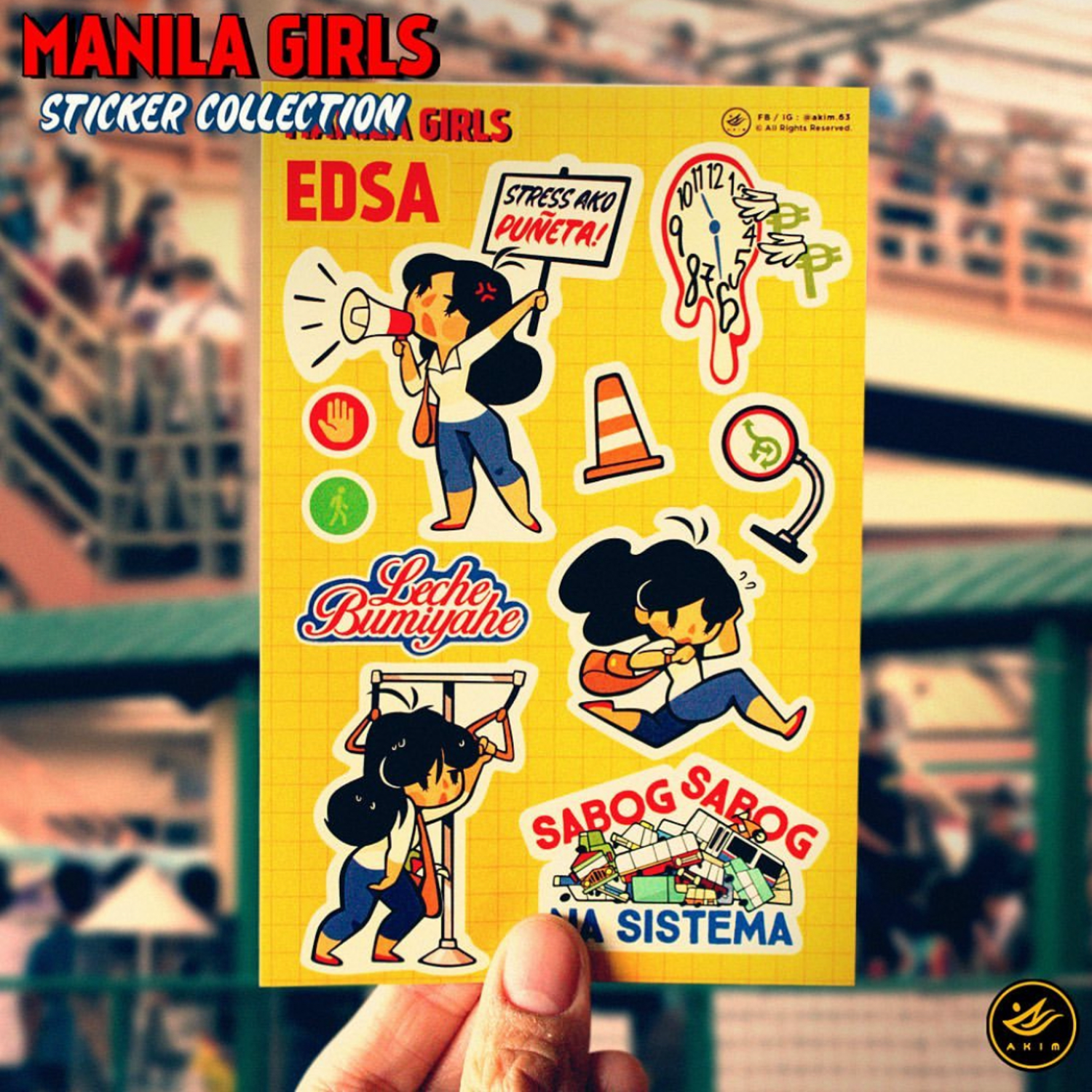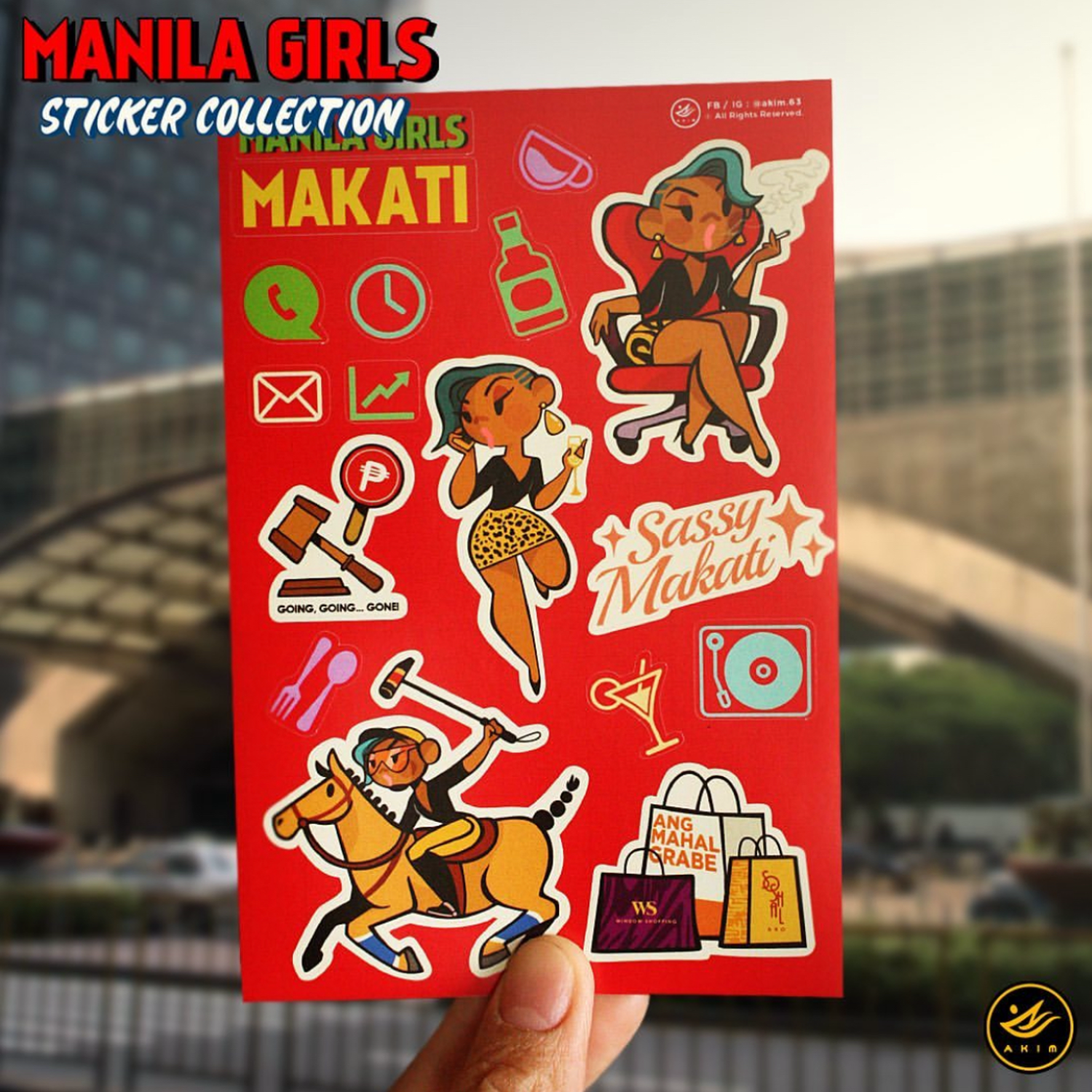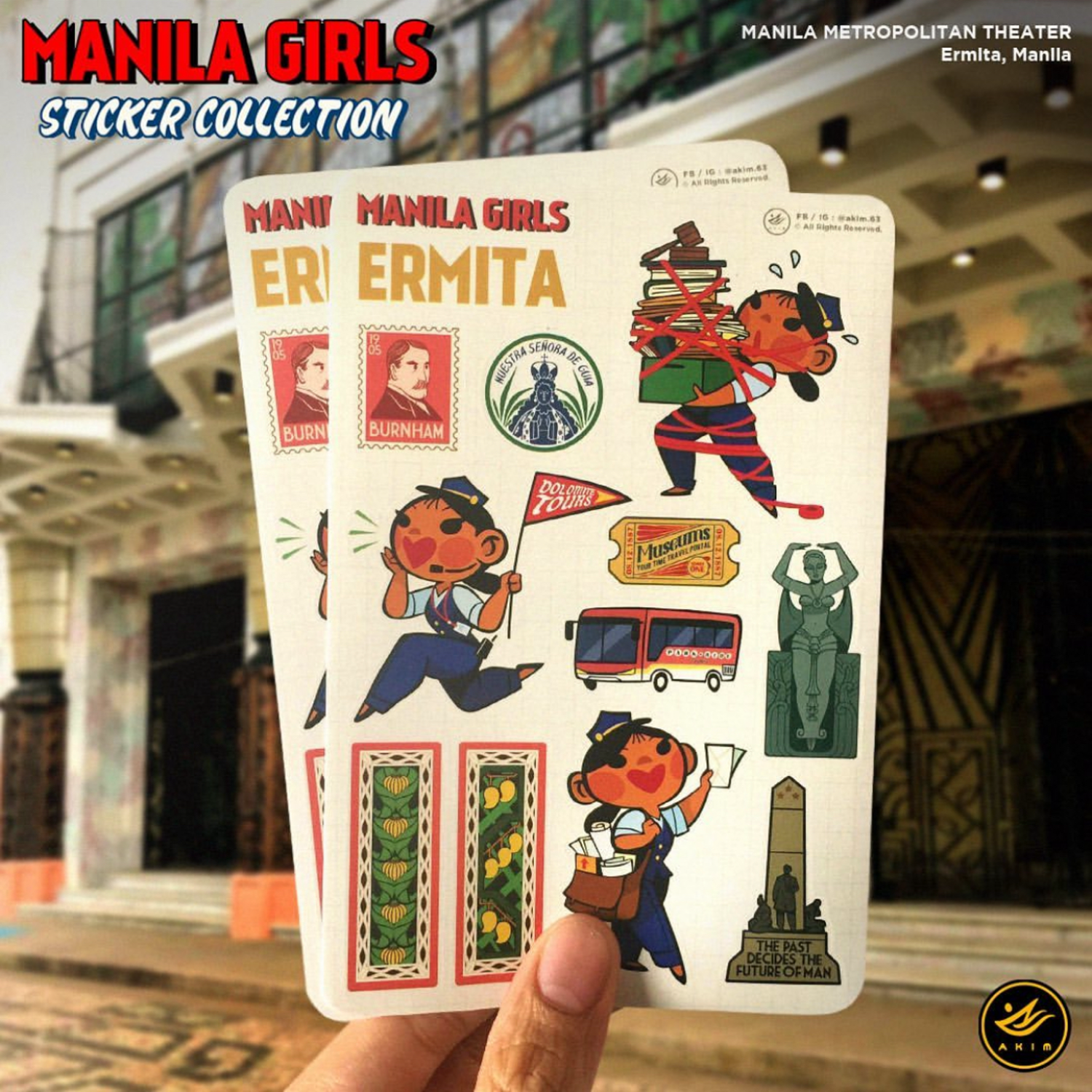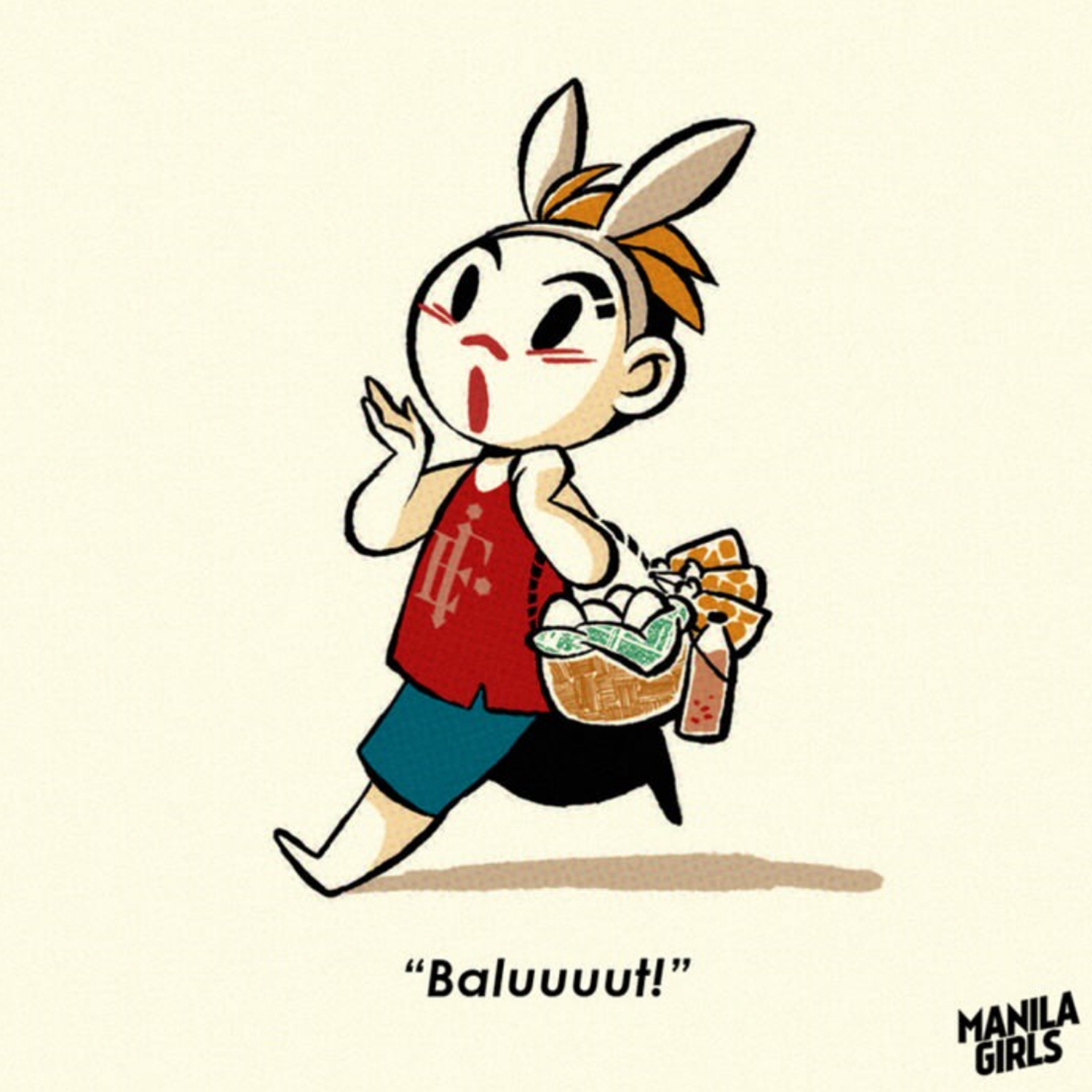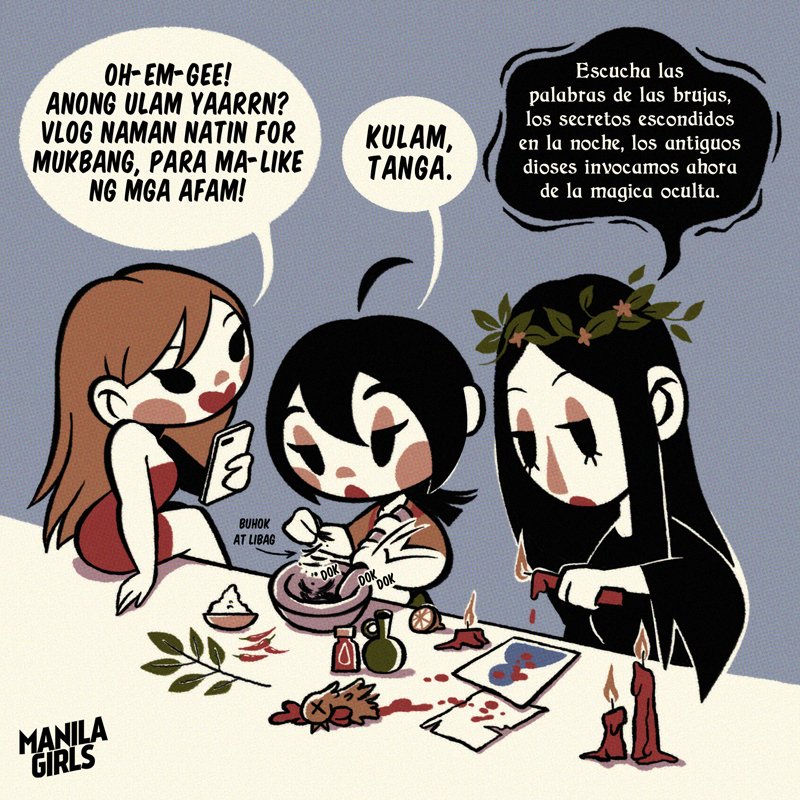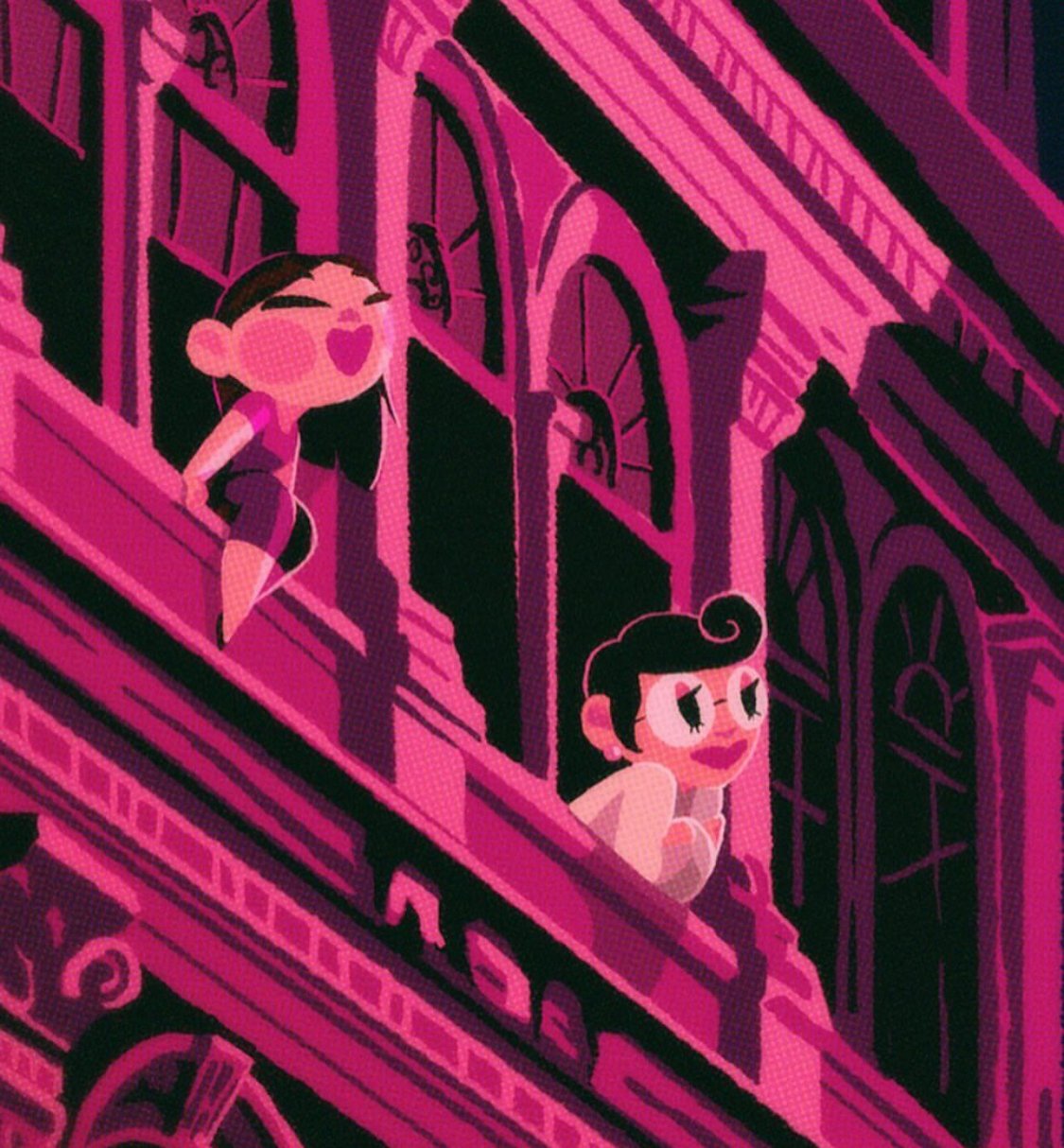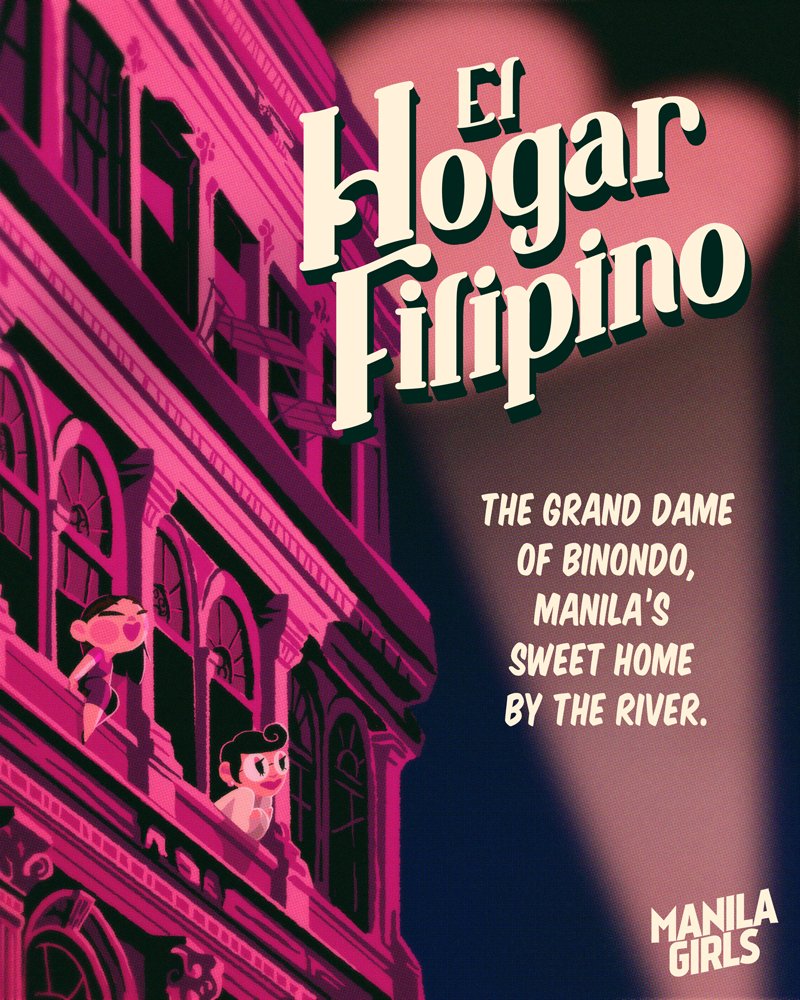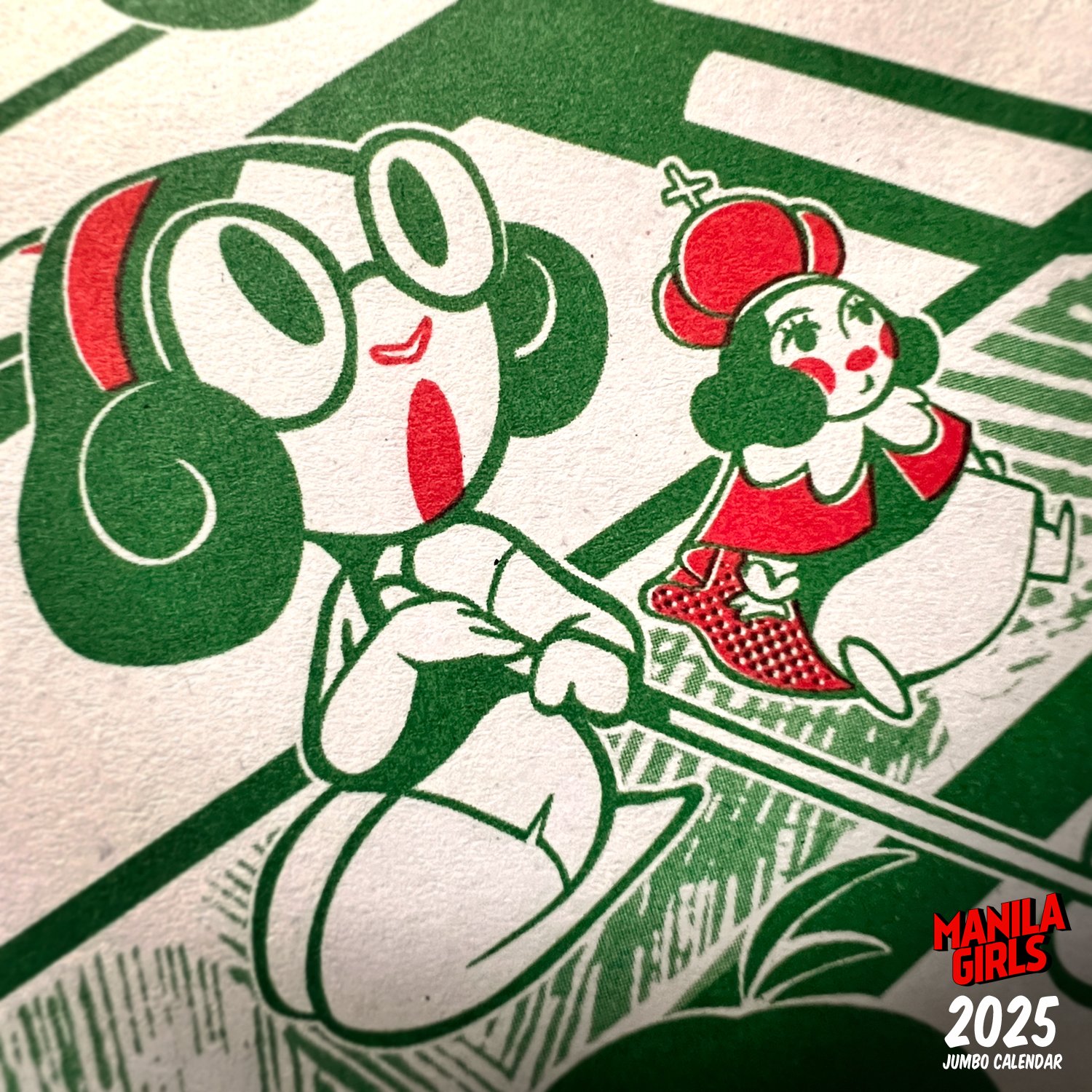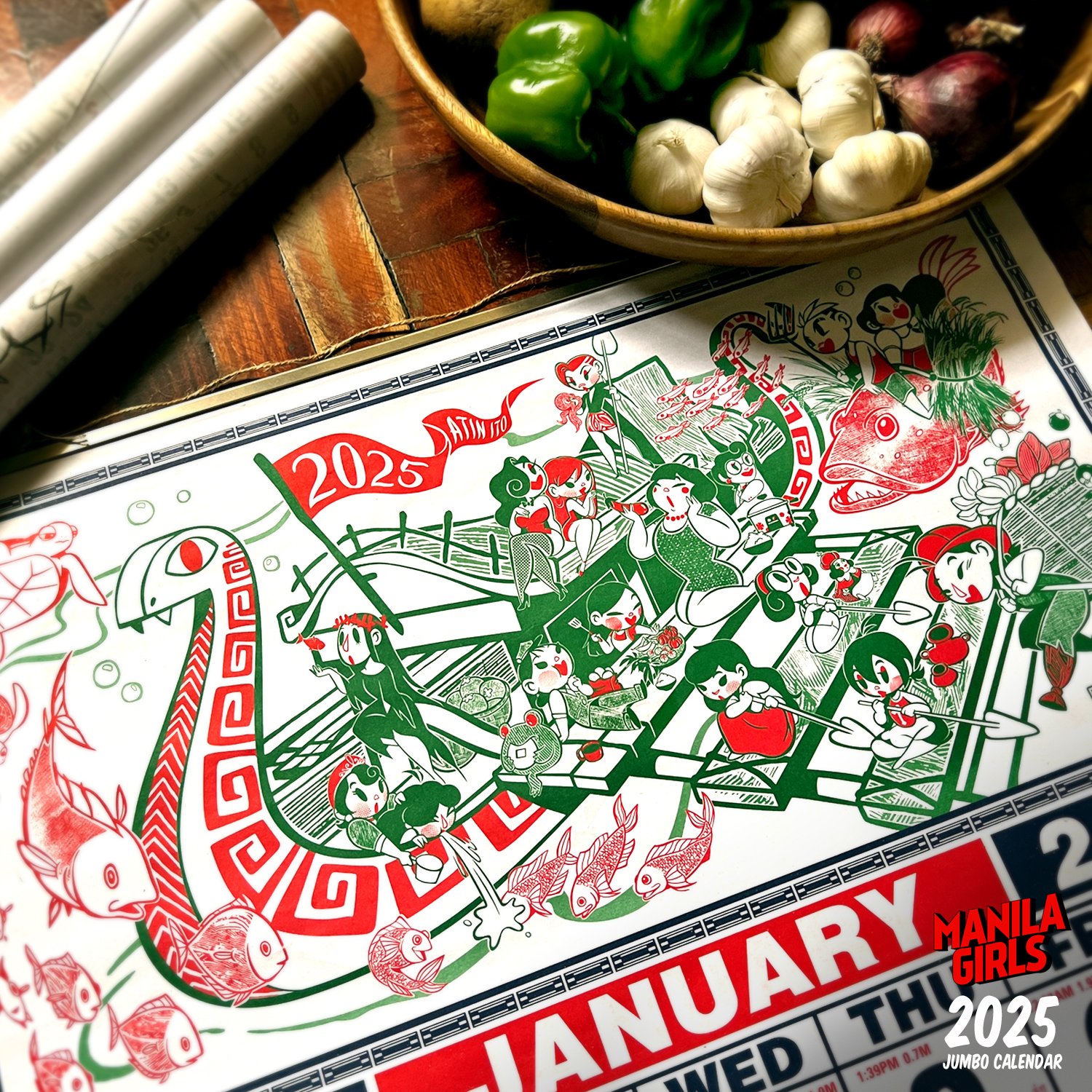Introduction and Interview Gabrielle de la Cruz
Images Kenny Tai (Manila Girls)
“A brief but immersive tour of Manila in under five minutes” is how visitors at the 2024 Manila Illustration Fair described their stop at artist Kenny Tai’s booth. Her star attraction is the Manila Girls sticker set, a collection of characters personifying Manila’s districts. Each ‘girl’ is a playful embodiment of her namesake: Ms. EDSA navigating grueling commutes and chaotic traffic, Ms. Ermita guiding you through historical tours, Ms. Intramuros standing resilient with stories steeped in stone walls, and Ms. Makati balancing the highs and costs of urban living, among others. Tai’s knack for storytelling had fairgoers reflecting on which Manila Girl they resonated with most.
Having explored Manila’s districts myself, I found her approach intriguing. With urban development often overshadowing heritage, it’s rare to see the city’s identity reimagined in a relatable, engaging way. Intrigued by her advocacy, I sat down with Tai about preserving Manila’s heritage through art, a conversation that extended well beyond the fair.
Read on for our chat on the Manila Girls:


Hello, Kenny! For the sake of our readers, can you please introduce yourself? When did you start making art?
Hi, Gabbie! Thank you for this interview. It was nice to chat with you during the Manila Illustration Fair, and I appreciate that you stayed with us for two days of the event.
Hello, Kanto readers! I’m Kenny Tai, age 37. I’m an independent illustrator, occasional animator, and freelance graphic designer. I started making art as early as two to three years old.


Above: The Manila Girls; Below: Picks from the Manila Girls sticker collection
Your work is rooted in activism, feminism, and heritage preservation. Can you tell us where your exploration of these themes stems from?
Growing up in a conservative, hierarchical, and patriarchal Chinese-Filipino family, I was often expected, as a woman, to be meek and obedient to my elders. Within this sheltered environment, I was presented with a distorted view of Manila: a bleak, decaying place with little hope, with only malls or other “tourist” destinations deemed desirable. This narrative sparked a curiosity in me, pushing me to question our society’s obsession with anything new—possessions, homes, buildings. This relentless consumerism troubled me deeply.
When I later learned about the devastation Manila experienced in 1945, and how much of the city’s culture and heritage was lost in that tragedy, it became a turning point for me. I was driven to look beyond what many deemed ‘ugly’ and rediscover the beauty and significance of Manila’s past. This exploration ties closely to my experience as a woman in a conservative family: I felt compelled to challenge expectations, to be progressive and critical, and to actively work toward preserving Manila’s heritage while telling the story of the city’s past to raise public awareness, rather than conform to the allure of the new.


Tell us more about the Manila Girls series. Was there a specific person, object, or situation that inspired this? Aside from personifying objects and places that illustrate Manila’s culture and heritage, what messages do you wish to convey through this?
From the beginning, my love for people-watching played a crucial role in my creative process. As a wallflower in my school, I spent a lot of time observing others. This fascination with people-watching naturally extended to observing different areas of Manila. I would study the distinct characteristics of each district, delving into their histories and cultural nuances. By integrating these observations, I design characters that reflect the unique essence of each area, using the district’s history as a careful reference to enrich and deepen my creations.
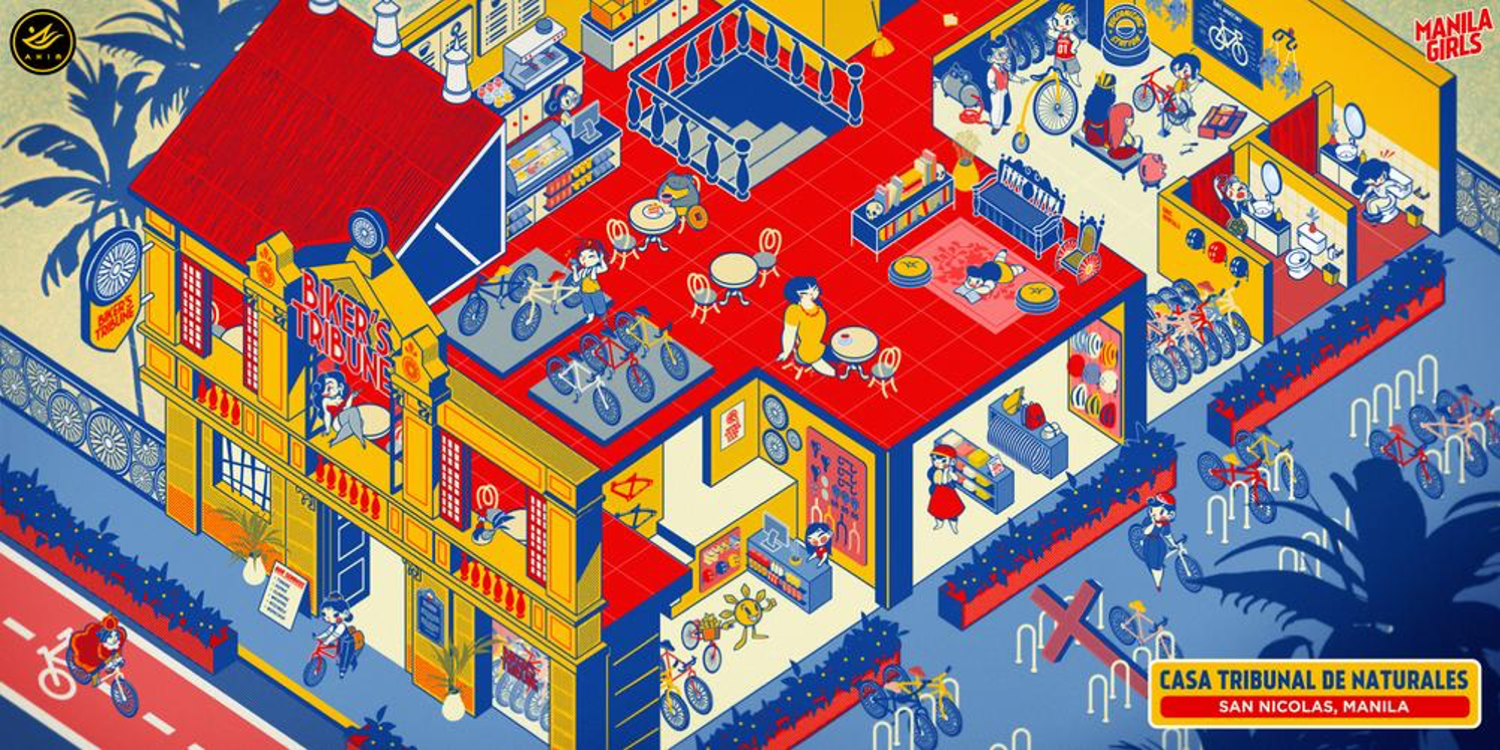



The artist also reimagines how historical spaces can be used today, inviting audiences to reflect on the value of preserving heritage structures.
Following the question above, what kind of conversations do you hope to inspire through the series? If it were up to you, how would you like people to see your work?
The Manila Girls series is a visual narrative of different districts. History can often seem formal and academic, but by personifying the districts as characters, I strive to create a more relatable and engaging world for people to learn more about the culture of Manila’s spaces and places. Filipinos connect with diverse personalities and characters, so presenting Manila as a collection of unique, emotive characters allows for a more nuanced exploration of the city’s beauty and challenges. This approach encourages viewers to reflect on the city’s strengths and flaws, ultimately fostering a deeper appreciation and a vision for a better Manila.
Did you consider creating or including other works for the Manila Illustration Fair? What was the thought process behind your curation for your booth?
I’m grateful to be included in this year’s roster of artists. For the Manila Illustration Fair, I’ve chosen to showcase only my Manila Girls series at the booth and not include my personal works. I believe it’s important for art to be curated around a cohesive theme, as this helps to guide people and introduce your artistic identity. Through this approach, I can effectively communicate the message behind my work and my advocacy.
Tai’s take on El Hogar Filipino, the “Grand Dame of Binondo”
What was the reception at the fair like? Can you share one notable feedback or anecdote from patrons?
I was thrilled to see so many talented creators, especially since I follow most of their work. It’s inspiring to observe the diverse ways they incorporate local content into their art. From JC Lo’s tri-color rough strokes of mid-century chairs, Addi Panadero’s elegant line work of Art Nouveau Filipiñanas, and Priscilla ‘Ella’ Dayandante’s lo-fi plant aesthetics, to Marcushiro Nada’s playful retro-inspired character designs—these artists are a testament to the richness of our visual styles and the depth of our local culture. It’s clear that we have the potential to stand out on the international stage, and I feel fortunate to be part of this community, with the hope of growing alongside such creative talents.
MIF’s organizers took great care of the artists, from hosting welcome dinners to providing water bottles, ensuring spacious booths, and maintaining excellent communication. I wish them the best for the next Manila Illustration Fair and look forward to their future successes.
The audience’s reception at the Manila Girls booth was warm and engaging, as many enjoyed my introduction. Some visitors were surprised, assuming that the artist behind Manila Girls was a male illustrator, “Kala ko lalaki gumawa“, while others amusingly remarked that I resemble my own artworks, “Kamukha mo artwork mo“.
You’ve shown us different reinterpretations of what Manila Girls are like. Now, can you give us your definition of a Manila Girl? Who is she, what is she like, and what does she hope to be?
I believe the Manila Girls characters stand for how I define who a Manila Girl is. They are here to show you an alternative view. Each borough, initially unappealing, slowly blossoms into something captivating. These characters capture the essence of Metro Manila’s streets and districts, drawing inspiration from the city’s rich history, current madness, and the Filipino obsession with personalities and beauty pageants.
With the Manila Girls, you’ll laugh, love, sympathize, or even take offense but never hate, just like you can never hate the cities despite their flaws. Through the series, I hope you will learn to embrace Manila’s imperfections, reconcile with its chaos, and leave with a story worth sharing. •
The Manila Girls 2025 Jumbo Calendar, “a visual journey that reconnects with Filipino heritage and celebrates the powerful legacy of the precolonial karakoa, a majestic war and trading ship shaped like a serpent, the karakoa isn’t only about strength or speed, but a spirit of resilience that aligns with the 2025 zodiac.” More details on the calendar and how to order here.
